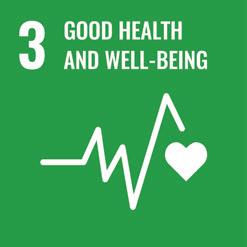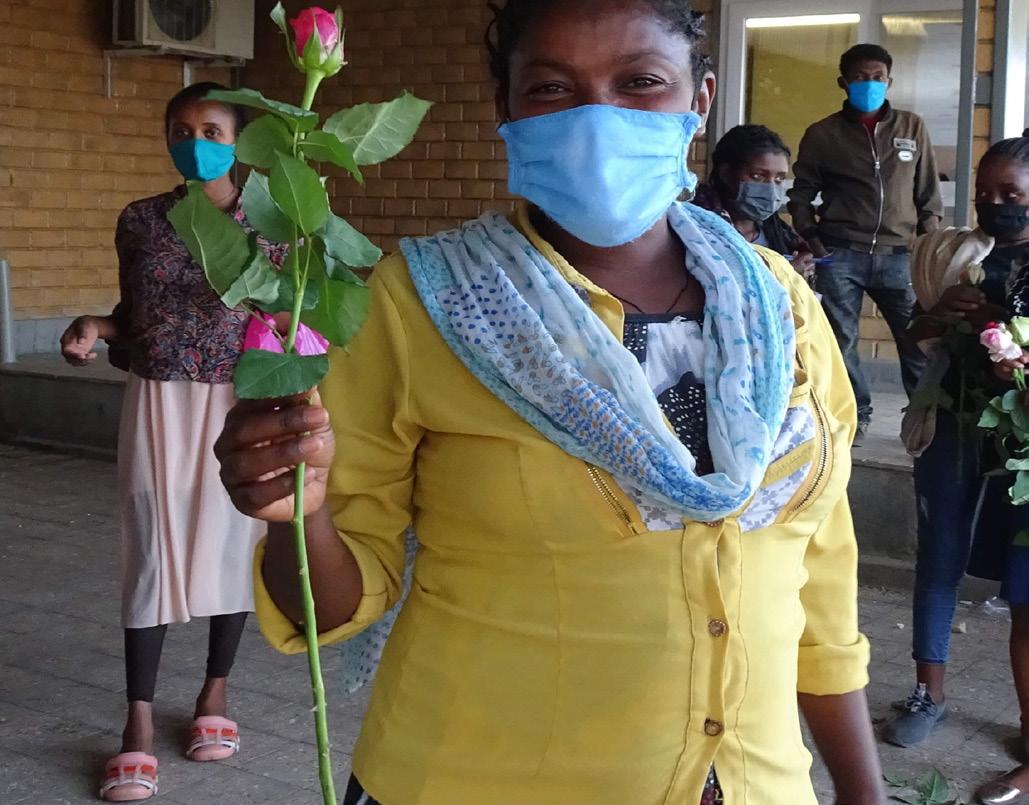Sustainability Report 2021






As Florensis, we aim to excel in everything we do, and we invest in innovations across our entire production and supply chain and in our people. Every day, our more than 2,500 employees work with passion on achieving our vision of being the most reliable, innovative and sustainable breeder and propagator.


We are aware just how vulnerable the environment we live in is and how important it is to make the sector more sustainable. Our sustainable mission is that we strive to act responsibly in all we do.
We care about the impact of our operations on the environment and on the societies and communities where we produce and source our materials from. For us, corporate responsibility is therefore a given.
Regina Dinkla Sustainability & Corporate Communcations ManagerAfter gaining our goal of reducing the use of environmentally harmful crop protectants (2015-2019), we formulated two concrete sustainability goals for the period 2020-2025.

With the realisation of even 75% reduction by the end of 2019 (against 50% as goal), we want to reduce the use of environmentally harmful crop protectants with another 30%. Our aim is to have reduced our CO2 emissions in 2025, with 2019 as a base.
Moreover, as company we want to help achieve the United Nations Sustainable Development Goals (SDG’s) and selected 6 goals where we know we can make a difference.








• All Florensis production locations made plans for 2021 to work on our sustainability goals.

• Florensis CO2 footprint per location and Florensis total is calculated for 2020. The new location Dinteloord is added.
• We re-joined as member of the Floriculture Sustainability Initiative (FSI 2025) and actively participate in 2 working groups (Environmental Footprint + Living Wage). FSI sets out to improve responsible production & trade, responsible conduct, and integrated reporting in the complete flower supply chain.
• Florensis Kenya and Florensis Ethiopia participated in the FSI Living Wage pilot and used the IDH Salary Matrix tool to get insight in the Living wage gap.
• All our production locations kept the MPS-A certification level (high level) and even A+ for our African locations. Breeding location Quedlinburg also gained level MPS-A.
• A switch was made from MPS-GAP to the GLOBALGAP certification and gained by all locations. This change was initiated because GLOBAL GAP is the leading scheme in the entire agricultural and horticultural industry and because the specific ppm scheme better suits Florensis as a producer of starting material.
• The Charity Committee structure (set up in 2020) worked well and although there was no Fancy Fair, we have donated €29,000 (from the old revenues balance) for 13 various CSR projects in Kenya and Ethiopia and €5,000 to the Roparun Foundation.
• We communicated on sustainability topics via social media and internal online updates, and we made a new sustainability page on the Florensis website (https://www.florensis.com/en-gb/ about/sustainability) with more and transparent information.
• Referring to 5 June World Environment Day we organised a Florensis Sustainability contest for all employees internationally. 48 Ideas were brought in, which resulted in 6 winners. The follow-up and elaboration on concrete implementation possibilities takes place in 2022.

The decrease in total CO2 emission is mainly due to the components electricity, freight transport and business traffic. Here we see the effect of COVID-19 with less production and transport for a period and less travelling. But also the effect of LED for SON-T lamps at HIA and FCF show result.
The decrease for Florensis BV is caused by the move of the young plants production from cuttings at HIA to Dinteloord and only doing young plants from seed at location HIA.

Florensis CO2 footprint (gross emissions):
Components 2019 2020
Florensis Abyssinia 1,139 tonnes CO2 1,015 tonnes CO2 Florensis BV (HIA + ext. locations) 20,432 tonnes CO2 14,727 tonnes CO2
Florensis Cut Flowers 8,543 tonnes CO2 8,559 tonnes CO2
Florensis Dinteloord 3,333 tonnes CO2
Florensis Kenya 1,599 tonnes CO2 1,472 tonnes CO2
Florensis Ethiopia 2,026 tonnes CO2 1,725 tonnes CO2
Florensis Portugal 318 tonnes CO2 469 tonnes CO2
Florensis Total 34,041 tonnes CO2 31,276 tonnes CO2
In total we compensated in 2020 for 70 tonnes CO2 (2019: 36), which is excluded from the results.
The pie chart shows the CO2 footprint of Florensis Total per theme in % over 2020.

Our contribution to SDG 3

• Florensis Kenya (FKE) partnered with the Kenyan ministry of health to provide access to COVID-19 vaccines for employees and beneficiaries.
This led to the vaccination of 92% of all employees.
• All FKE employees underwent training on infectious diseases and the role of vaccines from certified medical practitioners enabling them to lead a healthier lifestyle.

• Florensis Ethiopia (FET) sponsored 35 kids in the Herman Hamer day care Centre for orphans and vulnerable children.




Our contribution to SDG 4

• Florensis Abyssinia (FAF) supported a local primary school with a computer, printer and copy machine.
• FKE donated 50 desks, 50 chairs and 50 lockers to Rubiri School in Kenya to support learning for 2022 candidates sitting for the national examinations.

• Florensis in H.I.Ambacht (HIA) donated various young plants deliveries to schools as education material.
• Despite corona our HR organised still 32 Green Academy online training moments for the Dutch locations, involving 47 employees. There were 18 training sessions for the foreign Florensis locations, involving a total of 56 employees.
• FKE installed Wi-Fi at the workers’ residential area (Florensis village next to the production location) to provide access to information at the comfort of their homes.
• At FKE the Management staff and workers’ representatives trained on both local and international labour laws.
• FKE donated more toys and fun learning materials to the Florensis ECDE (Early Childhood Development Education) to ease learning for the children attending the school.





• FKE partnered with Women Win organization that helped conduct an internal gender assessment leading to the development of FKE’s 2022 gender goals for SDG 5 and adopted its first gender policy


• Our 2 locations in Ethiopia celebrated together with EHPEA the International Women’s Day with the theme ‘Empowering Women through Assessing Reproductive Health for Sustainable Sector Development’.




Our contribution to SDG 6

• FET organised to reuse heating water as irrigation water after RO.
• FAF installed water pumps for the local community.

• FKE launched a project on water recycling in greenhouse E and realized the same in Elite.





• Total Florensis use of chemical consumption was reduced by -19%, compared to -3% in 2020.
• FKE set up their first waste separation station at the farm to help weigh our different kinds of waste and enable recycling.
• FAF donated the compost waste to local farmers with degraded land. The good quality led to a much better harvest for the farmers.
• During the year most of our plant material from finished trials at HIA was donated to local nursing/senior homes and charity organizations.

• All African locations implemented the reusable Florensis trays (imported from Holland) and replaced a big part of the plastic planting bags for reusable planting containers.
• At FET they started to work on a new electric power setup to reduce generator hours and fuel consumption.
• New improved transport boxes (more cuttings/volume) were implemented by Kenya and Ethiopia, for less CO2 footprint emission and a better recycling process.
• For our Dutch locations we reported on our energy-saving measures, from the energy audit 2018.




• In Ethiopia solar panels were installed on the coffee house in Jogo Forest to have electricity for light, fridge and music.
• FKE joined the Kenya Plastic Pact with a major focus on defining the list of problematic plastic packaging and items and taking measures to address through elimination, reuse or use of alternative, more sustainable materials.
• Together FET and FAF planted 1,100 trees in the Jogo forest in Ethiopia to replace dead trees.
• FKE planted 6,000 trees at Eburru forest with the help of Eburru Rafiki, as compensation for their freight transport CO2 emissions.
• FKE successfully conducted trials on recycled picking bags used during harvesting and established disadvantages of biodegradable bags for storage of cuttings
• FKE conducted trials on compostable cards for insect trapping.
• Florensis H.I.-Ambacht invested in 100% LED assimilation lights in one of the departments and replaced all SON-T lights, consuming 25-45% less energy.

• FCF executed 25% of the ‘LED for Son-T lamps’ replacement plan and in Ethiopia our locations also replaced lamps by LED.

• FCF also replaced a part of the old ‘Hortiplus’ glass by ‘Diffuse’ glass, bringing 20% more light from outside. This implicates a reduction of lamp light use, thus less electricity use.

• FCF did an innovative test of indoor farming (cultivation without day-light) with good first results.


